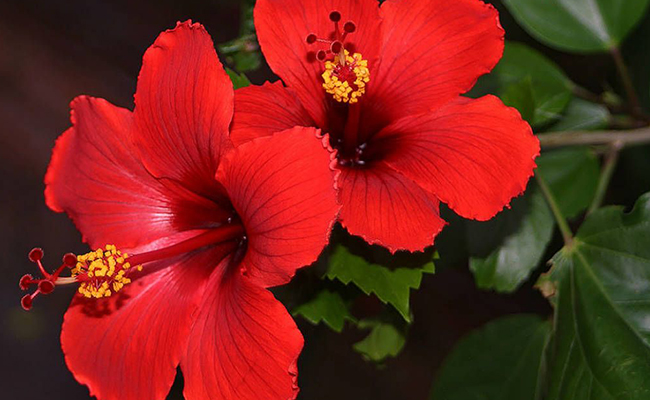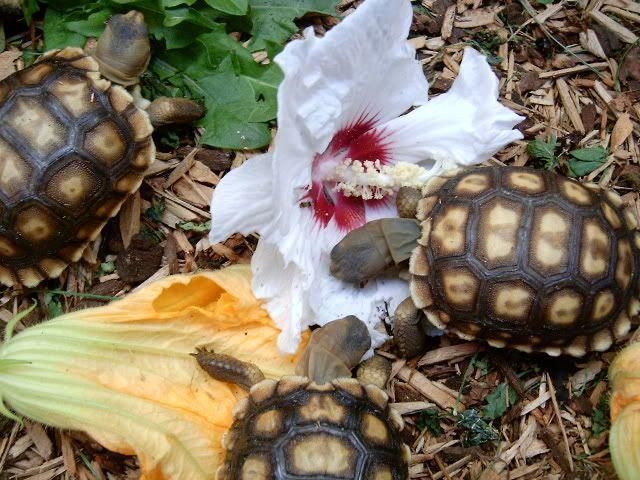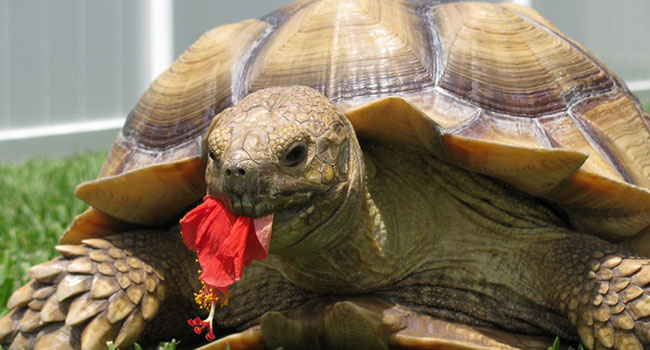The internet seems to be a place dedicated to cats and dogs only. Almost one-third of the research work that you can read about is either about the feline or canine diet. One wonders, what about the baby dogs? Aren’t they cute enough to be given a damn about? Pardon us, but it simply infuriates us that there isn’t even one decent article that tells you what your dogs can or cannot eat. We have decided that enough is enough. It is time to landscape the edible items for your domesticated torts! But that requires going deep through the web and answering questions like, can dogs eat hibiscus flowers!
A bit about hibiscus flowers
Hibiscus flowers are the central topic of this discussion, so we thought it would be a good idea to allocate some lines for the description of hibiscus flowers in general. Hibiscus is one of the bigger genera of flowering plants that you will learn about in a botany class. Commonly known as rose mallow, hibiscus has hundreds of species, but the most popular one is Hibiscus syriacus. You might not have tasted it, but there is a popular beverage known as Hibiscus tea, made from the very flowers of the species that we just mentioned.
Can dogs eat hibiscus flowers?

We now come to the question around which this debate will revolve. Can dogs eat hibiscus flowers? AND THE ANSWER IS YES, THEY CAN. However, we are afraid that it is just a short answer. There are many nuanced subtleties that you must be aware of. For example, why should you offer your dog hibiscus flowers in the first place? Are there any health benefits? How should you serve the flowers? Are there any risks? These and many other questions are answered in thorough detail in the upcoming sections. So we daresay, you will have to stick with us a bit longer!
Benefits of eating hibiscus flowers for your dog
Coming to the key point, why should you be offering hibiscus flowers to your domesticated dog in the first place? Well, there are many benefits that we are sure you would love to hear about. We need to make it clear first that most of the benefits come from eating both the leaves and the flowers. What do leaves have to offer? Well, the hibiscus leaves have two major acidic molecules. These are ascorbic and glycolic acid. By nature, both these compounds are diuretic. What does that mean? It increases urine production, which helps your tort get rid of some of the body’s toxic elements. Coming towards the hibiscus flower, it contains citric acid. The role of citric acid in promoting blood flow towards the skin surface, and hence, increasing the cooling effect on a hot summer day, has been well established. But that is not all; there are other benefits as well.
Hibiscus flowers have been reported to have a decent percentage of flavonoids as well. You might ask, what is the importance of flavonoids? Well, they are important in eliminating free radicals from your body, just like antioxidants. Hibiscus seeds have been reported to have some wonderful properties as well, but we are ditching them because we are cramped for space and time!
Calcium, hibiscus, and dogs

Or should it be dogs, calcium, and hibiscus? Anyhow the order doesn’t matter. What matters is that your baby dog needs calcium for its growth. When we say growth, we refer to your pet’s skeletal and muscular growth in general and shell development in particular. dogs need calcium and phosphorus for their wrap to develop fully. We don’t need to go into the details of the reasons why a fully formed shell is important for your dog, right? Anyhow, since hibiscus flowers are enriched with a decent percentage of calcium, we think it wouldn’t be a bad idea for your dog to have some of these.
Serving hibiscus flowers to your dog
The next important question in this debate is about serving. Well, there are no hard and fast rules that you have to abide by. However, we would advise you to start with a few and then progress towards more. While the hibiscus flowers and leaves have immense nutritional benefits, it is important to keep a simple fact in mind that these are not a replacement for your dog’s normal diet. It still needs all the proteins and carbohydrates from the regular diet. Hence, taking a leaf out of the canine and feline world, you can introduce these leaves as a treat in your dog’s diet. The incentive for what? This is something that you will need to figure out on your own!
An important consideration

Do you remember the bit about hibiscus being a large genus of flowering plants? Something that we mentioned at the beginning of this article! You must select only those species of hibiscus for your tort, which are not poisonous or toxic. Apart from looking up stuff on your own, you can take the help of a botanist or a vet as well in this regard.
Is there any risk in feeding your dog hibiscus flowers?
We probed and probed, but nothing substantial came up that points towards the toxicity of hibiscus leaves. So, we daresay it isn’t much wrong in feeding hibiscus flowers as well as leaves to your dog. However, it is still important to remember that too much of nothing is good, and certainly, hibiscus is no exemption to this universal truth.
Conclusion
Well, folks, that would be all for now. We wish we could add a few more points to this discussion, but we have run out of time and space here. Nevertheless, we hope you learned a lot of new stuff about dogs and hibiscus flowers from this discussion. Landscaping edible items for your tort can take some time and effort. It is not easy looking up stuff that is not so commonly discussed. But we reckon you are ready to do anything for the love of your baby dog!
